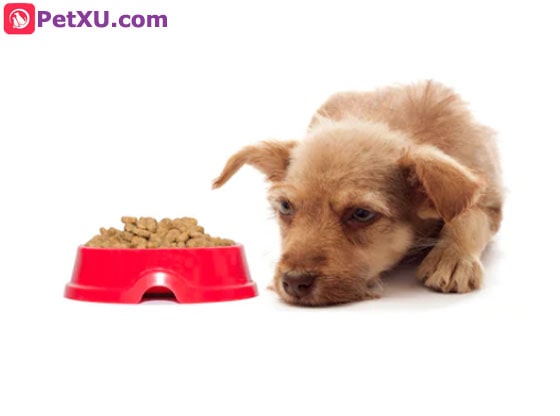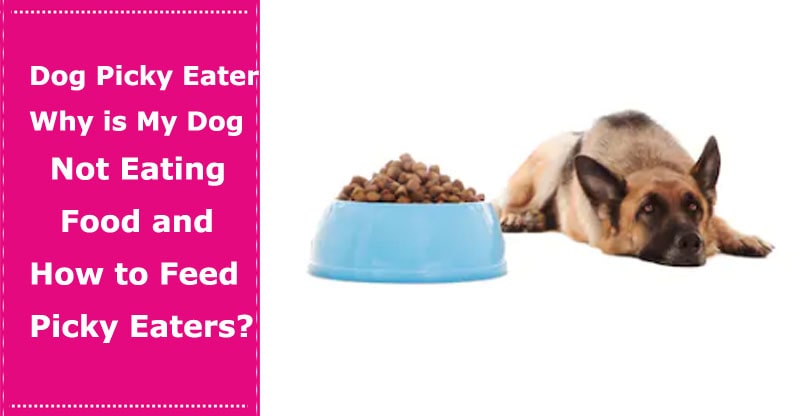Dog Picky Eater: Why is My Dog Not Eating Food and How to Feed Picky Eaters?
Picture this: you give your dog the most excellent dog food money can buy. You wait excitedly for her to gobble it all up. But all she does is sniff the food, lick it, and walk away.
What you have is a very finicky dog who is a picky eater. So what do you do?
When is picky eating a problem?
All living creatures need to eat regularly. Some creatures don’t need to eat as much as others, though.
If your dog is a habitual picky eater, but she still maintains the proper weight for her breed and size then there is no cause for emergency tactics just yet. The nutrients she gets when she does eat are still enough for her to live by.
If your dog is typically a greedy eater but turns to a picky eater overnight, you should watch over her for 1 to 2 days. If she’s losing weight and her coat gets ragged, and she’s losing its shine, then you should take her to the vet. Your dog may suffer from a disease, and it may be a symptom of picky eating. If your dog is still a puppy, and you see a complete change in her eating habits, don’t wait for a few days.
But, as a dog owner, having your dog habitually go for days ignoring her food can be stressful for you. Let’s look at some of the possible reasons why your dog is turning her nose up at her food.

Why is my dog not eating food, reasons for picky eating
1. Her breed is meant to be picky.
Some breeds love to eat. For example, Labrador Retrievers. They will eat anything, even things that are not food.
On the other hand, some breeds, like Yorkies and Maltese, are picky eaters. These dogs have discriminating palates, choose what they eat, take longer to complete their food, and sometimes their meals are not finished at all.
2. There are other sources of food.
Would you want plain food when you know there is something more interesting to eat? Your dog could be thinking the same thing too.
Your dog comes from a chain of opportunistic eaters. This implies that if you have food, your dog’s DNA should tell her to consume it. But if you’ve been feeding your dog with human food like scraps and lots of treats, then she understands there’s going to be other food waiting for her apart from her kibble. So, instead of eating her simple dog food, she will choose to eat delicious human food.
3. You introduced a new food to her.
Dogs are very susceptible to routine modifications. They also have sensitive digestive systems. So if you brought her new food, she might not like the smell and taste just because it’s new.
4. Your dog might be stressed.
Did you move to a new neighborhood lately? Does your family have a fresh individual or child? Is there a missing person from your family like a student who moved to college from the house? Does your family have a new pet? Are you working overtime now for weeks and changing the routine of your pet?
These changes might be stressing your dog so much that she feels too anxious to eat.
5. Your dog might not be getting a balanced diet.
This is linked to breeds, but for their diets, distinct breeds require different sets of vitamins and minerals. For instance, if you have a bulldog, her diet should focus on ingredients that encourage tough and supple skin so that it will not develop irritation from her wrinkles. In the meantime, golden retrievers need food that strengthens joints.
So your dog might be instinctively looking for other sources of vitamins or minerals that she does not get from her dog food.
6. Your dog could be suffering from an illness.
If it’s not a behavioral or environmental issue, then your dog might be suffering from a physical illness.
Approximately 40% to 50% of dogs in the US are overweight. As a responsible dog owner, you should understand that an overweight dog is likely to develop illnesses such as high blood pressure, type 2 diabetes, osteoarthritis, heart disease, and kidney issues. All this means your dog will have a shorter lifespan.
Beyond her weight, your dog could have problems with her teeth and mouth. As you know, having painful teeth makes it very hard to eat.

What should you do? how to feed picky eaters?
Here are some tips on how to feed picky eaters.
1. Stop giving her table scraps or other human food.
Be strict about this rule. Make sure that the other members of your family also do not give your dog human food on the sly.
Since human food is quite flavourful, your dog may create a liking for such powerful flavors instead of the bland but adequate dog food taste. However, these salty and spice-laden foods can lead to issues such as diarrhea or pancreatitis.
Giving table scraps may create other health issues for your dog since human food contains lots of salt, spices, and ingredients such as garlic and onion that are harmful to your dog.
2. Wean her out of liking human food.
Your dog should not develop a liking for human food. The best scenario is from the moment she is a puppy she should not have a bite of human food.
If your dog is already addicted to human food, then slowly wean her out of it. As stated above, the first step is to stop giving her human food.
If you’re concerned that if you stop giving her scraps, your dog will not eat, then placed a small amount of human food in her food bowl with her dog food. Reduce human food slowly until your dog eats 100% dog food. You may want to use wet dog food while doing this to prevent your pet from separating her dog food or eating just human meat.
It would also mask the smell of human food by using wet dog food and make your dog more used to the smell of dog food. Wet dog products are even more heavily flavored than kibble, so your dog’s flavor may be more enticing.
3. Keep your dog’s food and the human food separate.
Make sure your dog doesn’t identify human food as something she can also consume. Train her to eat from her bowl alone. Keep the food and treats of your dog in containers separate from containers of human food. Your dog will understand which container is hers and identify as their food only from other food containers.
4. Take her food away after a certain period.
Make sure your dog understands that her food will be taken away if she does not eat it. Set a time limit for her to eat her food. Even if she walks away, don’t take away her food bowl immediately. Let it stand in place for 15 to 30 minutes. When the time is up, take her food bowl away even if the food remains uneaten.
While waiting for her to consume her food, do not ask her to eat or pay a lot of attention to her food. Doing this can make her think that if she doesn’t eat, she will get your attention. Recall, picky eating is considered to be poor act, so do not strengthen it by babying it.
Don’t give her anything else until her next scheduled mealtime.
When you keep taking her food away, eventually, your dog will realize that dog food is better than no food at all.
5. Don’t give her a lot of treats.
Make sure your dog work hard before you offer her treat. For instance, before offering her a little treat. Or make sure you’re just giving her treats during the workout.
Don’t give her treats when she’s misbehaving or when you want some peace in the house. This will reinforce her bad behavior.
You can also consider giving verbal praises and tactile treats like a pat on the head or a scratch behind an ear instead of food treats.
6. Change her food slowly.
If you want to give your dog to a new kind of dog food, do it slowly. Begin by mixing the old a with small amount of new food. Gradually add more new food and lower the old one until she eats only the new food.
New dog food may attract your dog to eat more due to the new flavor. But you shouldn’t alter the food of your dog all the time because your digestive system may not be able to cope with too much change in her diet.
7. Find out what she likes best.
While we ‘re considering changing your dog’s food, you might want to research what type of food is her favorite. Some dogs like kibble like wet dog food. Find out what type of your dog likes most and stick to it afterward.
You probably think that your dog might want some variety in her food. But consistency is more important, especially for a picky eater.
Also, double-check that the dog food you’re serving to her is not out of date or spoiled. Your dog might not want to eat it because she smells that it has gone bad.
8. Keep to a consistent feeding routine.
A consistent routine can assist calm your dog down. Your dog’s got a very lovely biological clock so she understands when it will be her next feed. This consistency will increase the expectation of her next meal.
9. Find out the source of her stress.
If it’s a new routine schedule, make her adjust to her new routine.
Let her accept the new person in your family. If it’s a baby, allow to your dog sniff the baby and get used to the new little person. If it’s a big human, let your dog eat or play with her.
If you have a new pet, feed your dog in a separate room so that she can eat in peace without any worry that the other pet will steal her food.
Take her out for walks so that she will be able to adjust to the new neighborhood.
When her stress goes away, her appetite might return.
10. Make her work for her food.
Take your dog out for a walk right in front of her meal. This physical exercise could increase her appetite. It will also emulate the way wolves in the wild have to hunt for their food.
11. Bring her to the vet.
If you think your dog’s picky habit is due to medical reasons, bring your pet to the vet. Whether it is having a problem with its teeth or something else you can’t check immediately, but your vet can perform the right examination and advise you on proper treatment.
Conclusion
Strengthen your dog’s positive feeding experience. Praise her when she eats her food properly. Play with her and give her special attention when she eats her food. Be cautious while you wean her out of human food or give her a new kind of food.
1 - 1Share

